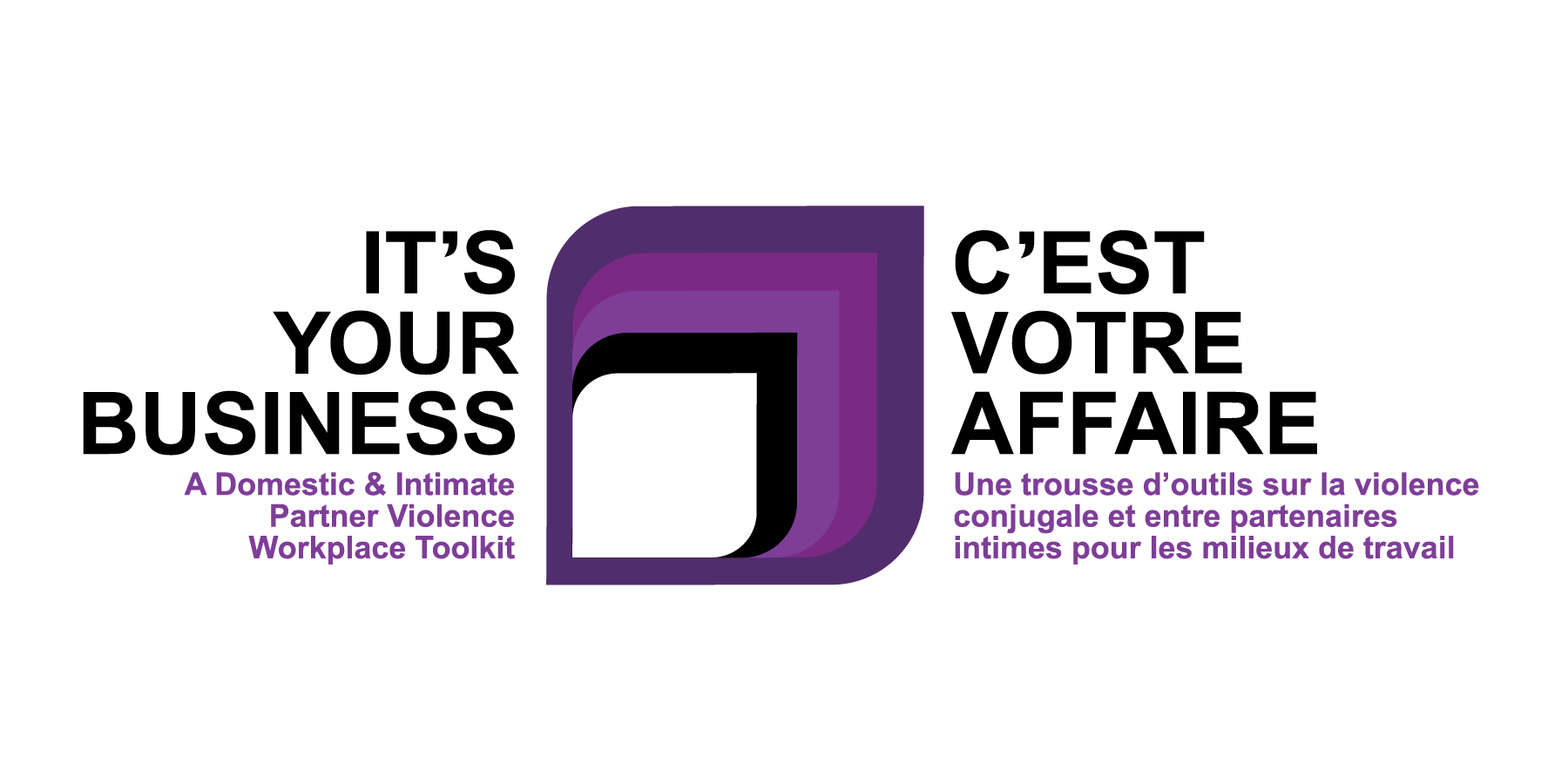
Domestic/intimate partner violence (DIPV) can occur in any relationship, with people of any gender identity, sexual orientation, culture, religion, education, age, socio-economic status, or ability. That being said, a “one-size-fits-all” approach is not appropriate when responding to DIPV in the workplace. For marginalized people, DIPV is often experienced alongside other forms of discrimination and violence such as homophobia, transphobia, ableism, racism, and colonialism, and it is important to address these barriers in your response.
Reminder: Although usually discussed separately, marginalized identities can intersect. For example, an employee or co-worker may be an immigrant who identifies as part of the 2SLGBTQ+ community, or an Indigenous person with a physical disability. Responses should always be tailored to the individual.
- 2SLGBTQ+ (two-spirit, lesbian, gay, bisexual, transgender, and queer) people are at equal or higher risk of experiencing DIPV compared to heterosexual, cisgender Canadians. 2SLGBTQ+ people are vulnerable to violence targeted toward their gender identity or sexual orientation such as being outed (having their 2SLGBTQ+ identity disclosed against their wishes) or being intentionally misgendered.
Note: The + in 2SLGBTQ+ acknowledges that language around identity changes and evolves over time, and not all gender identities and sexual or romantic orientations are listed in the current acronym. It is important to be open-minded and respectful when speaking with employees or co-workers when encountering unfamiliar terms.
- People with disabilities report twice to four times the rate of DIPV compared to Canadians who do not have disabilities. When the abuser fills the role of caregiver or assists with daily tasks (such as providing transportation), this can be an additional barrier to seeking support or leaving the relationship.
Note: Disabilities can take many forms, including physical, cognitive, psychological/emotional, and sensory disabilities. The needs of individuals will vary greatly. Disabilities are not always visible or obvious to others.
- Immigrants, refugees, and newcomers do not report higher rates of DIPV than other Canadians in population-based studies, however, they face unique challenges related to the settlement process. This may include the abuser confiscating immigration papers or passports, or threatening to withdraw their sponsorship. Immigrants, refugees, and newcomers may also face greater levels of isolation while social and professional networks are developing.
- Racialized people face barriers to help-seeking rooted in racism including being blamed for the DIPV they’re experiencing based on their cultural background, religion, race, or ethnicity, and discrimination (and violence) from law enforcement and other service providers.
- Indigenous people are twice as likely to report DIPV compared to non-Indigenous Canadians. These high rates of DIPV stem from ongoing colonial violence that has harmed Indigenous communities and families for centuries, including racism, displacement from traditional lands, Residential Schools, the 60’s Scoop, and missing and murdered Indigenous women, girls, and 2SLGBTQ+ people.
Note: “Indigenous” is an umbrella term that encompasses many different communities of First Nations, Métis, and Inuit people. New Brunswick is the traditional territory of the Wabanaki peoples including the Wolastoqiyi, Mi’kmaq, and Passamaquoddy peoples.
- Income level: DIPV occurs within all income brackets, however, victims with relatively low incomes may face financial barriers accessing services and housing options, and may also encounter class-based stereotyping that will impact the services they receive.
- Women: While people of all genders can be subjected to DIPV in any intimate relationship, the vast majority of victims are women, and men tend to more commonly be the abusive partner, particularly heterosexual relationships.
Statistics Canada, Canadian Centre for Justice Statistics. Family violence in Canada: A statistical profile, 2013. Available (English: 2013; 2016; 2017) (Français: 2013; 2016; 2017
Beaupré, P. (2015). Cases in adult criminal courts involving intimate partner violence. Juristat (Statistics Canada Catalogue no. 85-002-X). Available: https://www150.statcan.gc.ca/n1/en/pub/85-002-x/2015001/article/14203-eng.pdf?st=dYsPFhZs
Going from “One-Size-Fits-All” to Diversity-Informed
| One-Size-Fits-All | Diversity-Informed |
|
Assuming diverse employees or co-workers feel comfortable discussing or disclosing their identities
| Employers should ensure workplaces are safe spaces by: – Ensuring support for diversity is visible and reflected in workplace policies – Challenging homophobia, transphobia, ableism, racism, colonialism, classism, ageism, and sexism – Partnering with local communities and organizations with expertise in these matters |
| Assuming a workplace is not diverse because it does not “look” diverse | Diversity is not always visible. Fear of being outed may be a barrier to coming forward. Employers and co-workers should not: – Disclose someone’s gender identity, sexual orientation, disability, or other marginalized identity without permission – Assume the gender identity of someone’s partner |
| Assuming all DIPV services are: 2SLGBTQ+ inclusive Accessible and barrier-free Culturally competent Offer translation and interpretation | Employers should inform themselves about inclusive and accessible DIPV services in the area: – Do local women’s shelters accept trans women and non-binary people? – Are there services available for male victims? – Are services accessible to people with physical or sensory disabilities? – Are services offered through an Indigenous lens or tailored to diverse cultural contexts and religious/spiritual traditions? – Is there translation and interpretation available for people who aren’t fluent in English/French? – – Are there barriers to accessing services (e.g. specific criteria, financial barriers, etc.?) |
| Assuming everyone is familiar with Canada’s DIPV laws and is comfortable interacting with the justice system | Immigrants, refugees, and newcomers may not be familiar with Canada’s DIPV laws, or may come from countries where the legal system does not support people who are being abused – Immigrants or refugees with permanent residence will not lose status for leaving their abuser, even if the abuser is their sponsor – People with temporary status should be referred to legal support – People from marginalized communities – particularly Indigenous and racialized people – may not feel safe interacting with police |
Reminder: It’s okay not to have all the answers. Making the workplace a safe and supportive place addresses some of the major barriers that marginalized people face. Continue listening, learning, and building capacity and allyship. Refer to the Supportive Workplace Policies, Practices and Programs and the Creating a Positive Workplace fact sheets for more ideas.
Please note: the word “victim” is used throughout our toolkit where the term “survivor” could also be used to describe people subjected to domestic or intimate partner violence. While some identify as surviving the experience and others, as being victimized, we respectfully acknowledge that some people subjected to abuse do not relate to either term.
